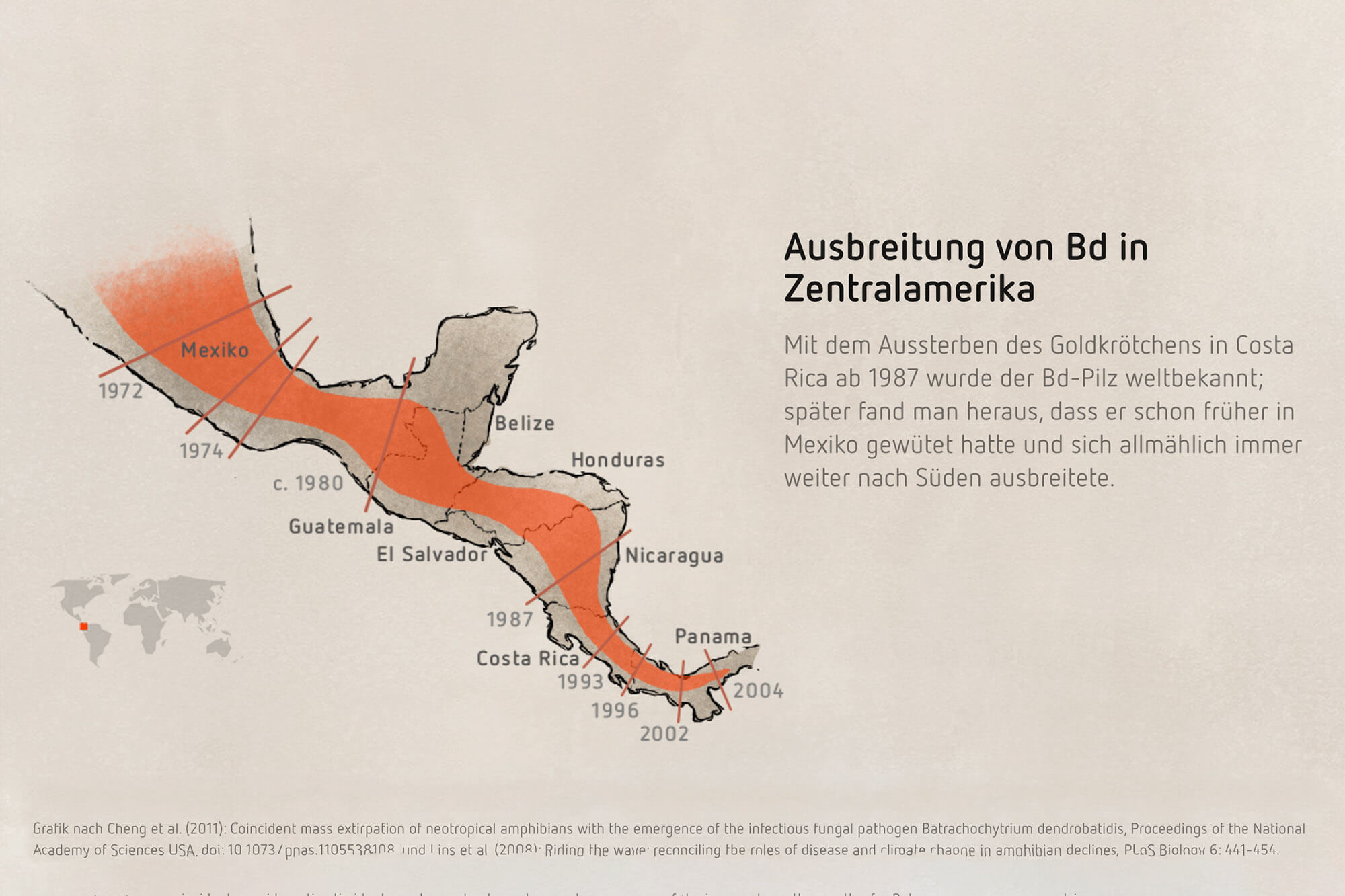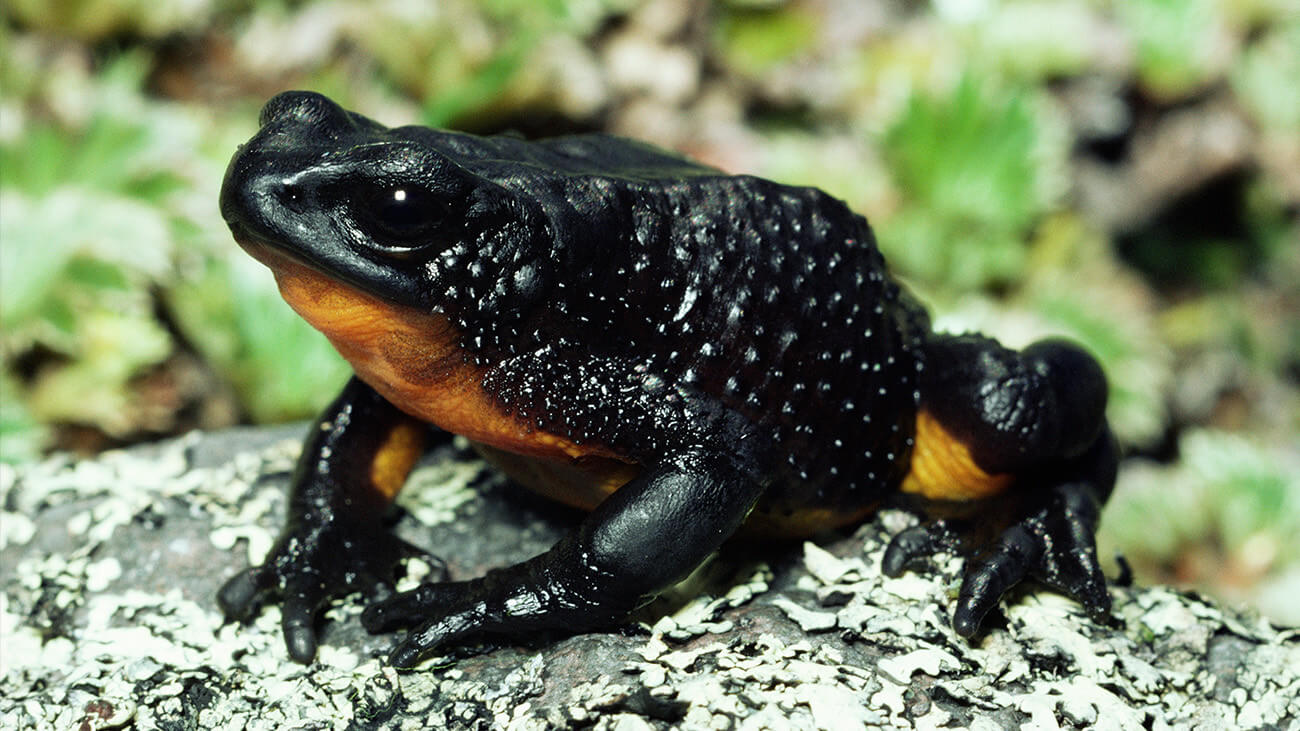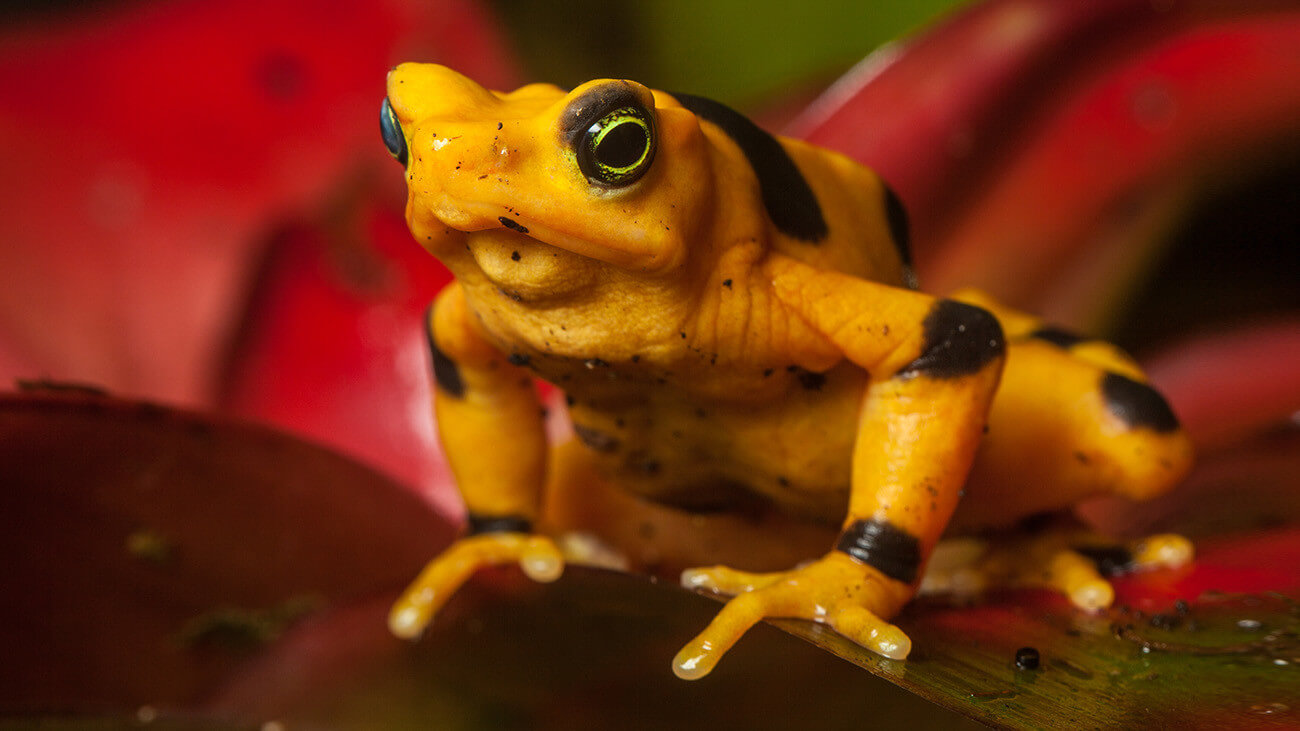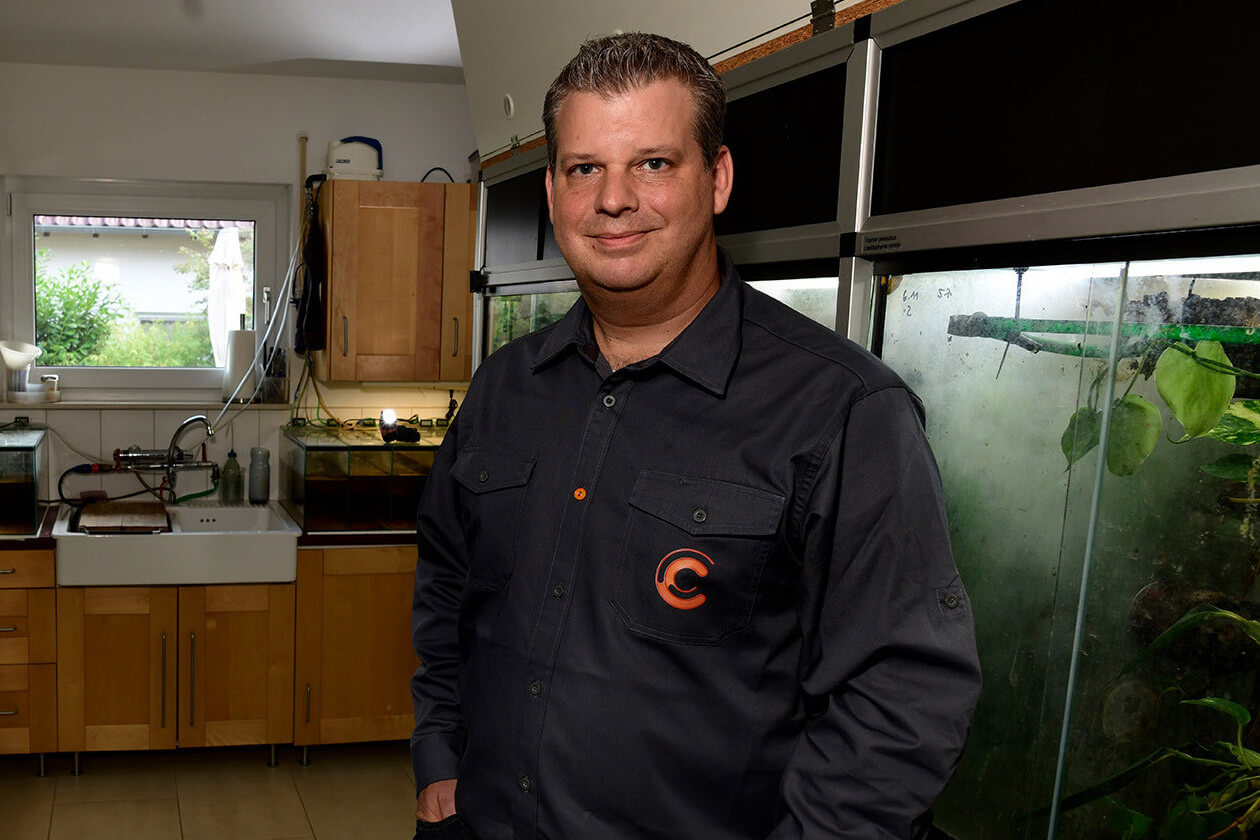
Faced with Fungi
A man that left as a frog lover and came back as a conservationist: Tobias Eisenberg’s story is tightly linked with one of the most dramatic biodiversity crises of our time. It is about the pure joy of fascinating animals, mysterious mass extinction, and the prospects of dedicated action.
A frog in the cradle
Tobias’ enthusiasm for frogs apparently developed very early. Family photos show him as a three-year-old, discovering frogs on walks with his family. In the 1980’s, as a teenager, he began breeding reptiles in terrariums, and he soon added amphibians: poison frogs, glass frogs, treefrogs. In part because of his fascination with frogs, he decided to study veterinary medicine. At that time, the 1990’s, he also made his first trips to Central America to observe his favorite animals in their native habitat.
Frog Biography
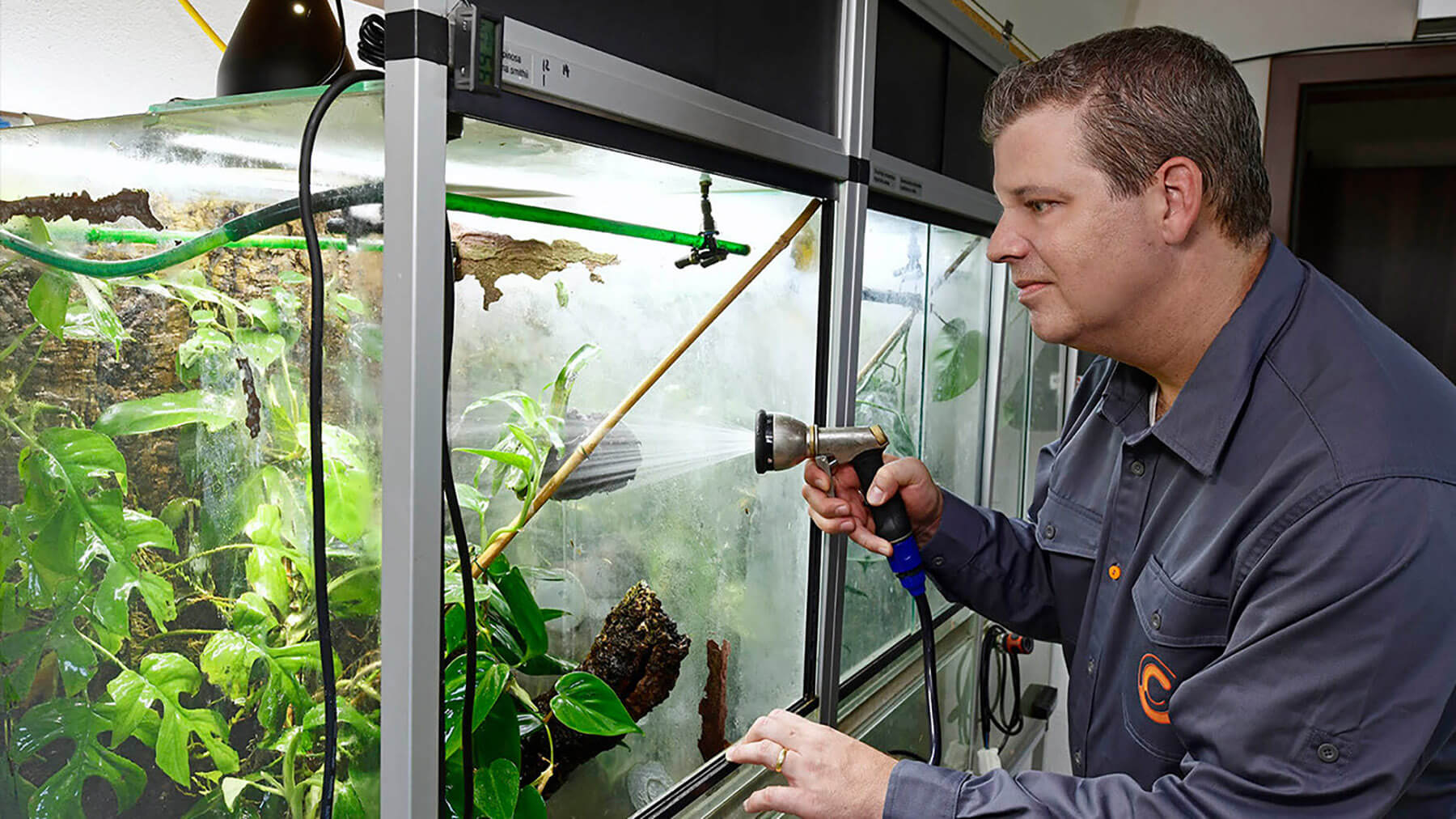
Tobias regularly visits the Latin American forests during vacation. While others relax, he thrashes through the jungle to photograph rare frogs. © Jörg Sens

Taking photos is more than just an exciting hobby for the ambitious amateur photographer, as his pictures have also been published in journals and books. During his excursions, Tobias also collects valuable ecological data from the amphibians’ habitat. © Nikola Pantchev
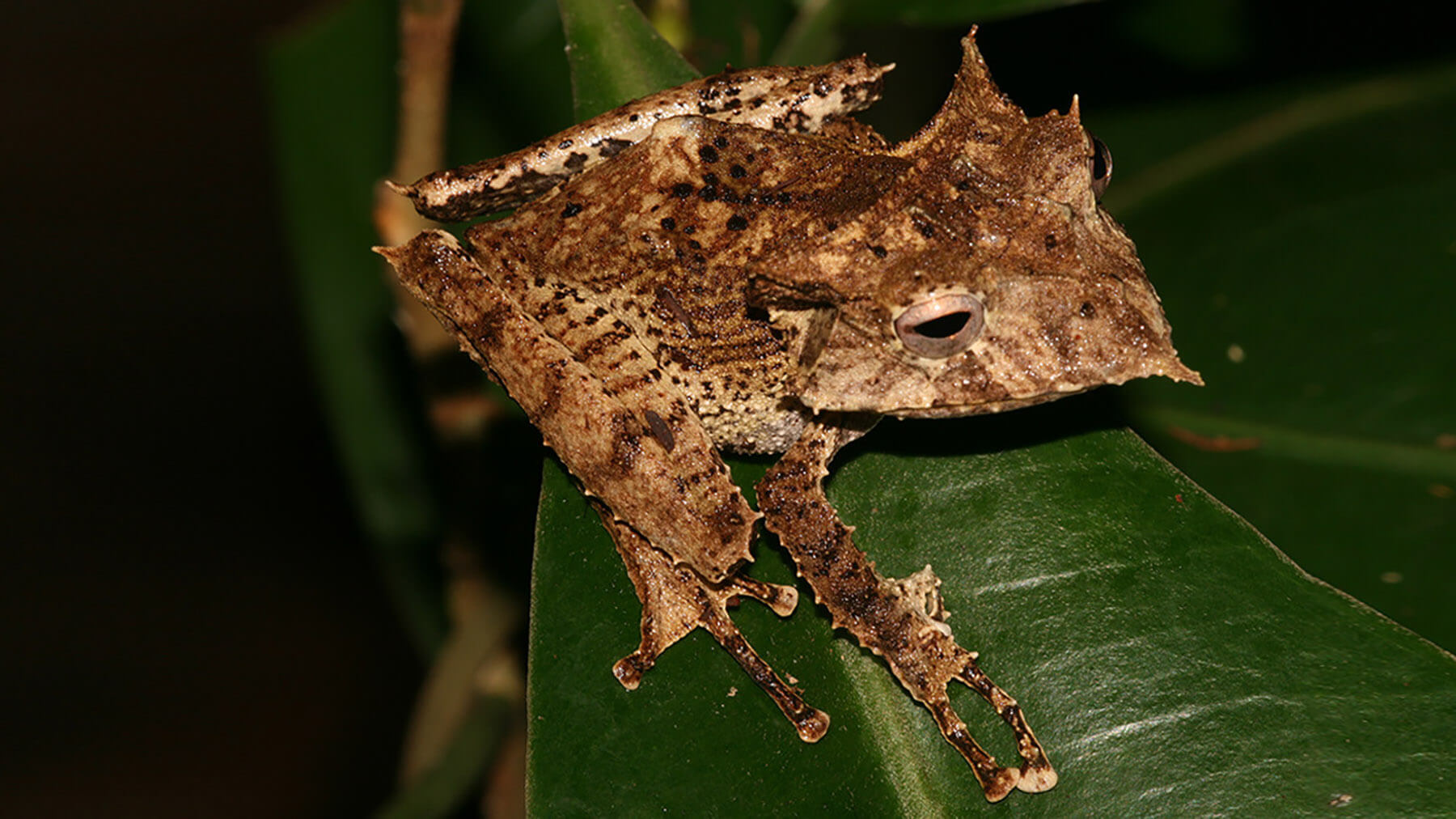
A highlight: the bizarre Sumaco Horned Tree (Hemiphractus proboscideus) frog from the Amazonas basin. The females carry their eggs on their backs until the baby frogs hatch. © Tobias Eisenberg
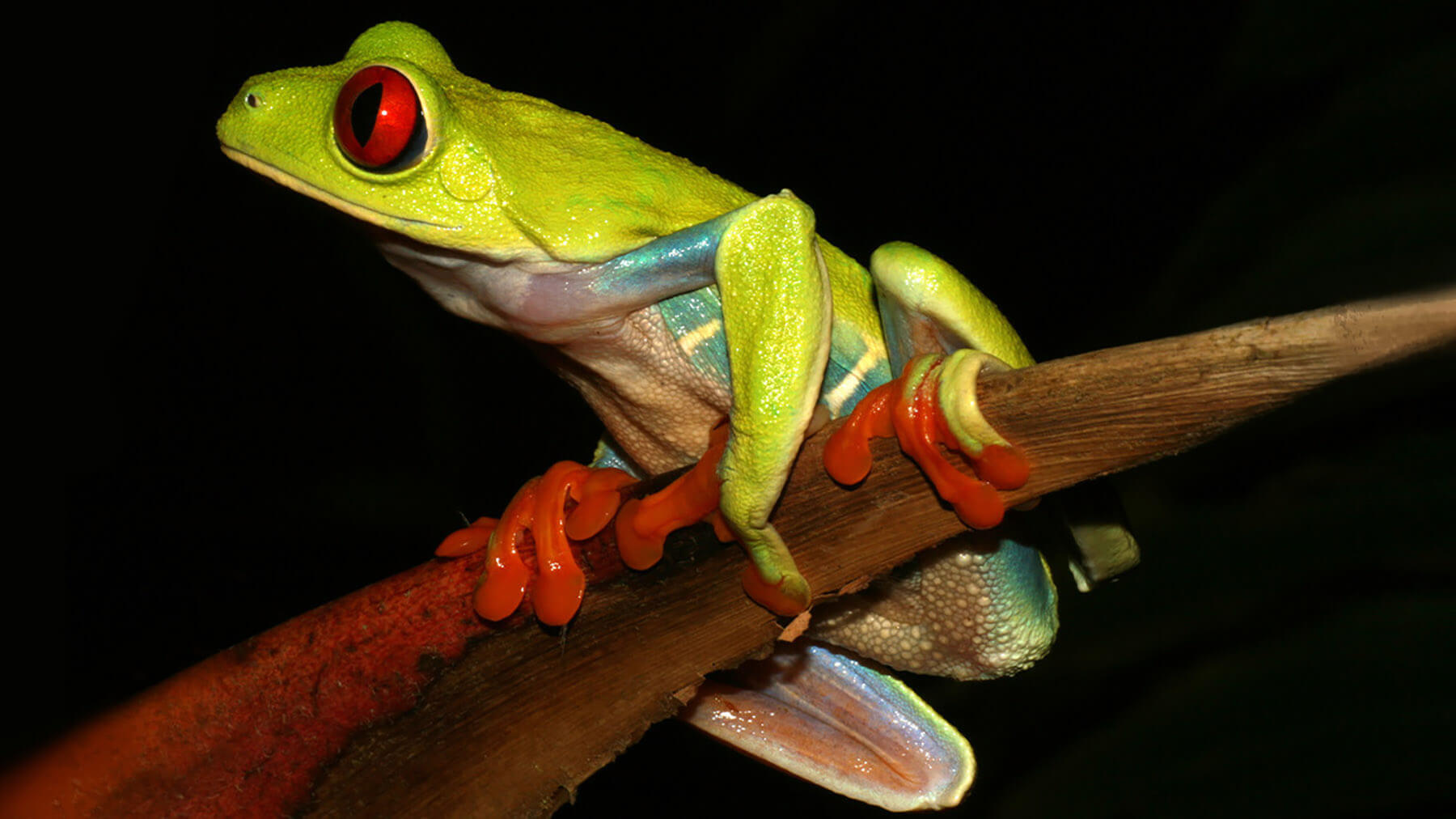
One of the most common and most charismatic Central American frogs is the Red-Eyed Treefrog (Agalychnis callidryas) The beautiful frogs are often kept in terrariums. They were among the first frogs that Tobias himself bred. © Tobias Eisenberg
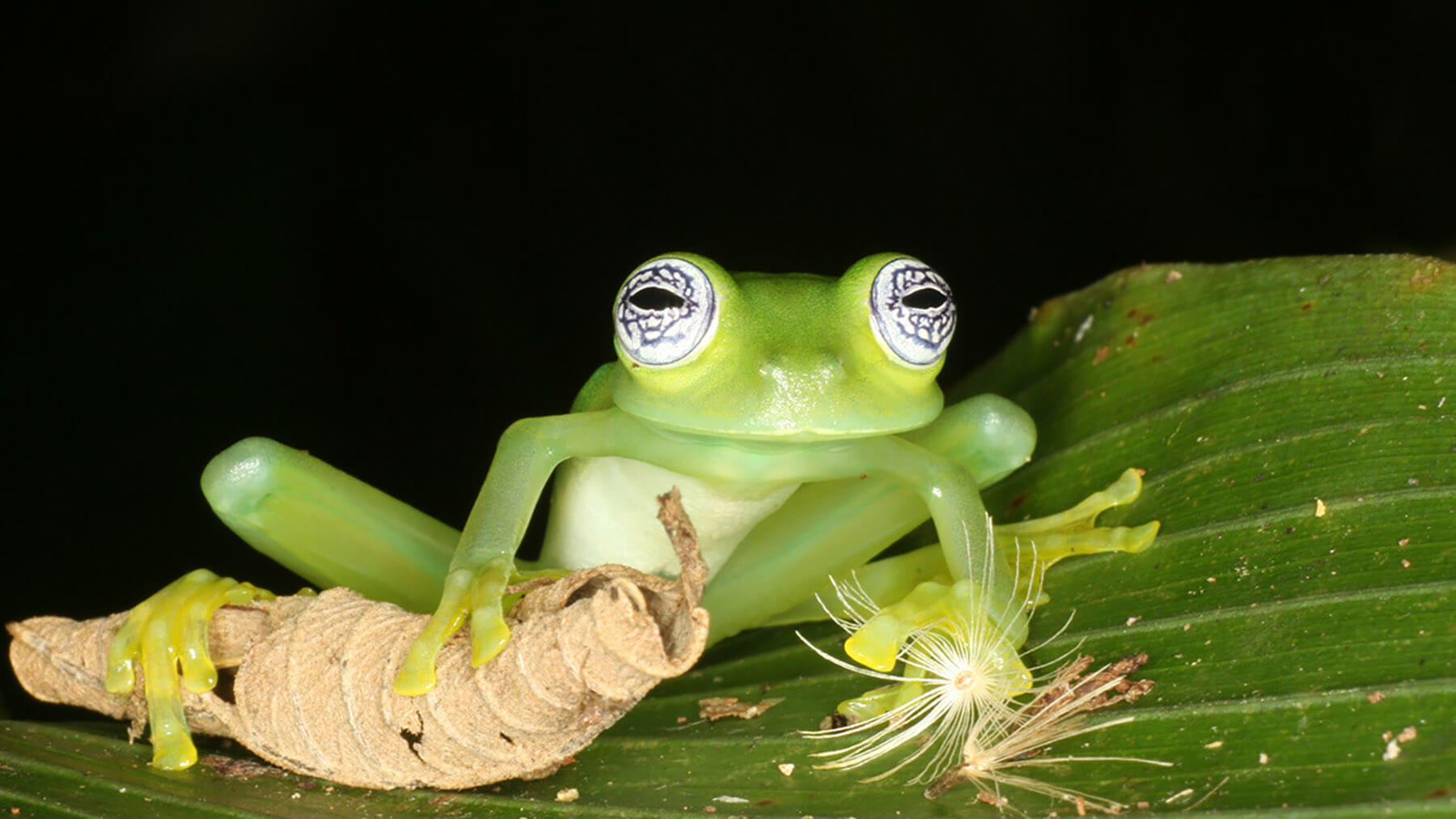
Glass frogs also fascinate Tobias. A notable feature of this diverse group of frogs: their stomach is usually so transparent one can look inside. © Tobias Eisenberg

Tobias has made a dream come true with his new house. Right from the start, he included the technical requirements for a terrarium room and an energy-saving water supply system. Here, he breeds numerous species of frogs. © Benny Trapp, Frogs&Friends
In the midst of an extinction crisis
At that time, unbelievable reports started to emerge. Within a few years, frog populations and even entire species disappeared without a trace, for no comprehensible reason. Central America, Tobias’ favorite region, was particularly affected. In addition to the now famous Golden Toads and Stubfoot Toads, many leaf frog populations, Tobias’ favorite frog type, collapsed. The young veterinarian was suddenly in the middle of an extinction crisis.
The enemy under the microscope
A cause for this mass extinction turned out to be a previously undiscovered but terrifying fungus – the Batrachochytrium dendrobatidis, or Bd. The fungus has affected Tobias at work and at home. Professionally, he works in the Hessian state laboratory in Giessen and examines amphibian samples for the deadly pathogen. And privately, because his fosterlings include the Lemur Leaf Frog, which is on the verge of extinction due to the devastating effects of the fungus.
A frog close to his heart
Tobias began breeding the bright green frogs with their long, thin legs and oversized eyes nearly twenty years ago. “The Lemur Leaf Frog is a rather small tree frog,” Tobias explains. “It is one of my favorite species because of its calm lifestyle. Because of the many trips where I was able to watch it, and, of course, because of its need for protection, the Lemur Leaf Frog has a special place in my heart.”
"Because of its need for protection, the Lemur Leaf Frog has a special place in my heart."
A safe haven
So, Tobias breeds this species and hopes others will do the same. That’s why he joined Citizen Conservation: “After the different challenges captive breeding efforts have faced, I see Citizen Conservation as a smart approach. It is the first effort that tries to bring together ‘amphibian nerds’ from zoological institutions and the world of private breeders to finally start this important effort. I’m impressed!”
